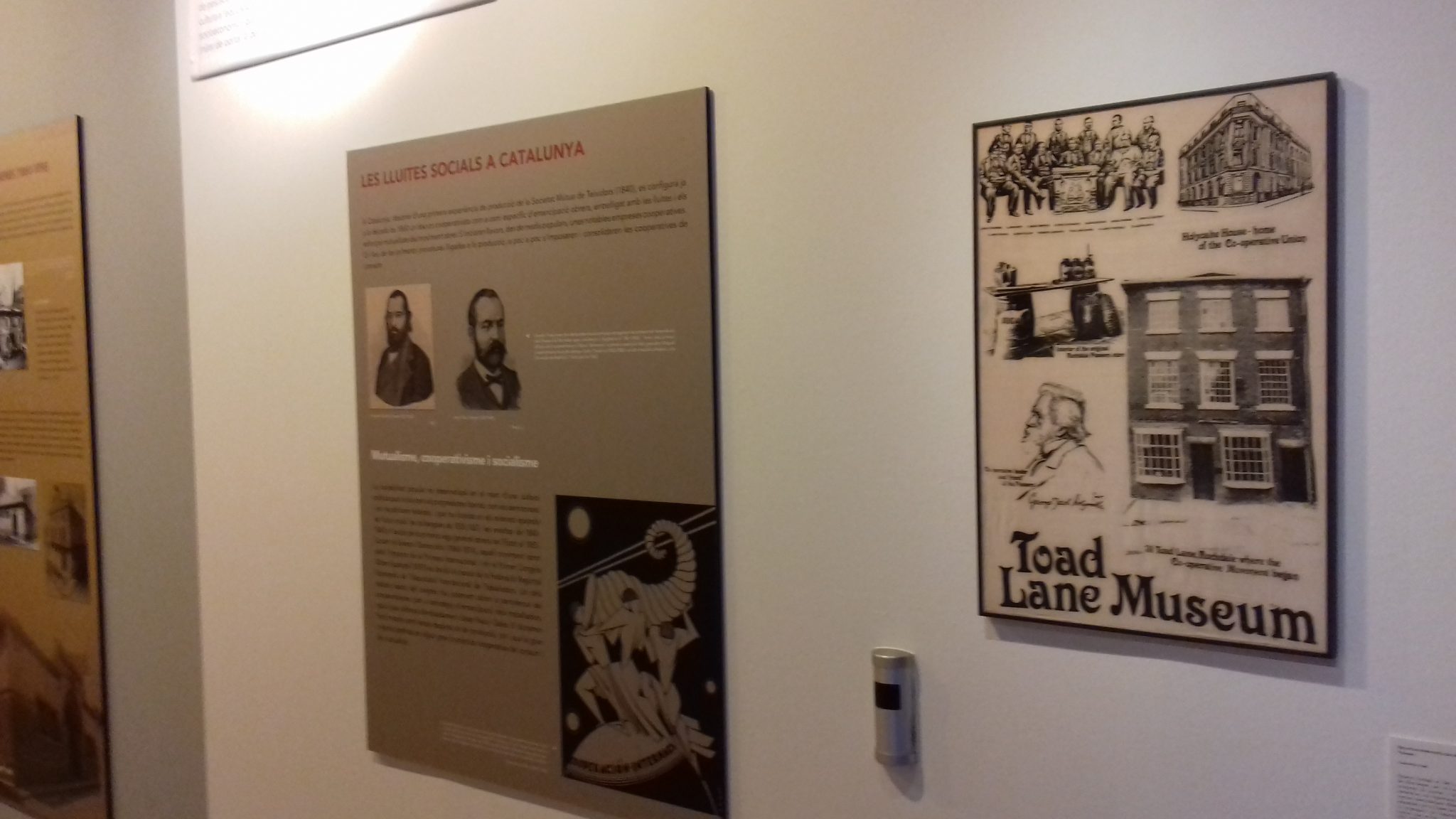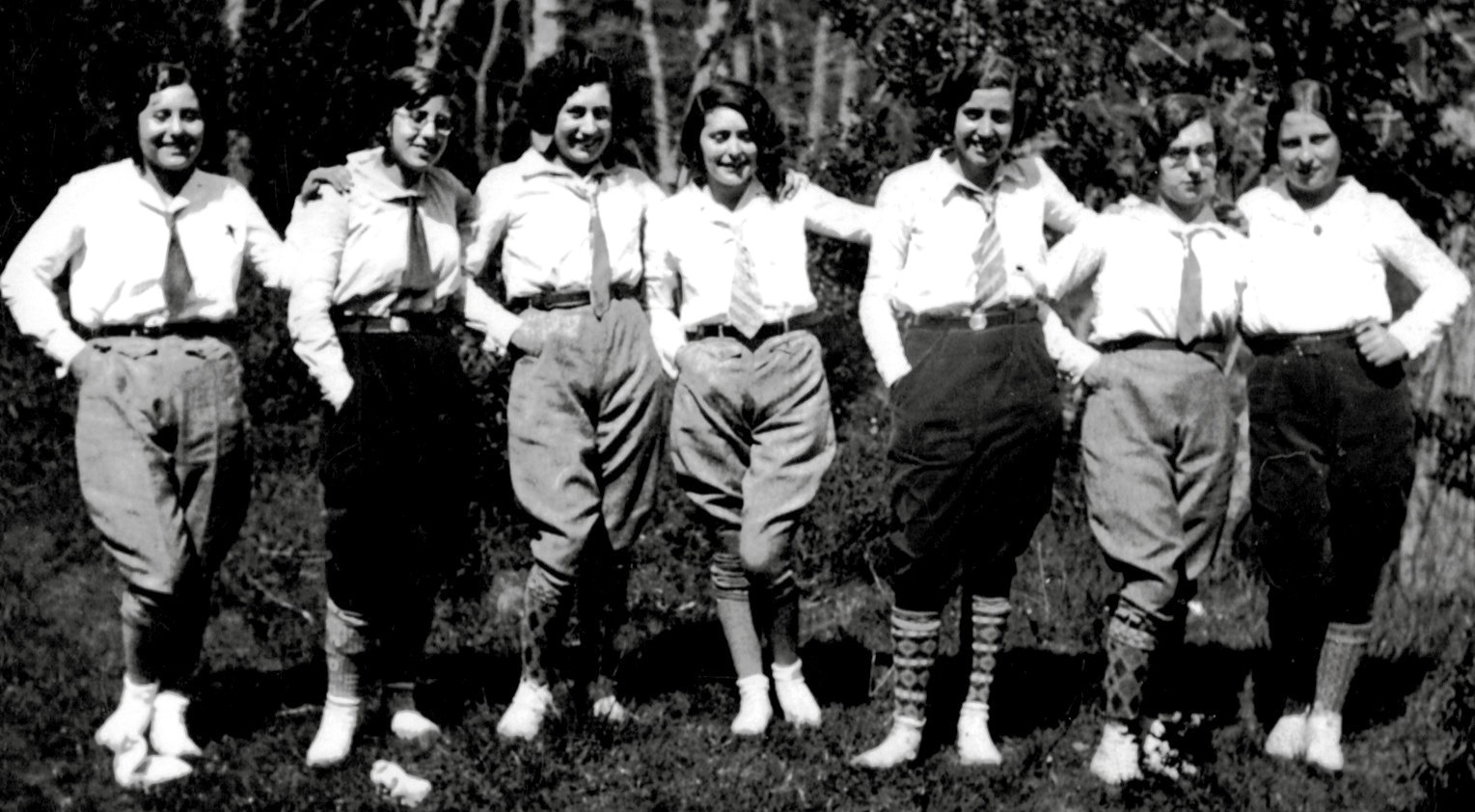Recent visitors to Barcelona’s Museu d’Història de Catalunya have been reminded of the significant role of co-ops in Catalonia’s social history.
The museum staged an extensive exhibition of the region’s co-op past, going back to the mid-19th century, with rare photographs of early consumer, productive, agricultural and fishermen’s co-ops. The display highlighted the lead the co-op movement took in providing working-class schools, at a time when education was privately run or in the hands of the church. A photograph from the early 20th century, for example, shows children and their parents from La Flor de Maig (the May Flower), a Barcelona-based consumer co-op, on a mass excursion to the countryside. As well as operating seven branches, La Flor de Maig ran its own school and owned a farm.
The early Catalan co-op movement was influenced by developments in other countries including France and Britain – two advocates of co-operation, Fernando Garrido Tortosa and Joan Tutau i Vergés, travelled to Rochdale in 1861-62 to see what was happening there. But Catalonia rapidly proved it was fertile ground for its own co-op movement: the exhibition carried the appropriate name Catalunya: terra cooperativa (Catalonia, a co-operative land).
Early Catalan co-operation was informal but movement became more consolidated later in the 19th century, with the passing of the Law of Associations in 1887, and the Catalan movement really came into its own between 1931 to 1936, following the end of the de Rivera dictatorship and the creation of the democratic Second Republic.
But following the victory of fascism in 1939, the co-op movement went into decline, and surviving co-ops found themselves effectively controlled by the state. The Franco years still cast a long shadow, and arguably much of the strength of today’s independence movement in Catalonia comes from the less than fully effective transition to democracy after Franco’s death.
The exhibition, which closed last month, was jointly organised by the museum and the Catalan co-op research organisation La Fundació Roca Galès, which takes its name from another Catalan co-op pioneer. Josep Roca i Galès (1828-1891) was a working-class activist, co-operator and republican who founded one of the first co-operative newspapers in Catalonia, La Asociación, in 1866. Today La Fondació Roca Galèscarries on his legacy by publishing its own magazine Cooperació Catalana, bringing together the different arms of the contemporary movement.
One of those most actively involved in the exhibition is Marc Dalmau i Torvà, a founder member of the worker co-op La Ciutat Invisible (the Invisible City) which runs a community bookshop and resource centre in the Sants area of Barcelona. He stresses that the exhibition benefited from being a genuinely co-operative endeavour.

“The work of producing the exhibition was the fruit of the co-operative efforts of many people,” he says. “Twenty or so people collaborated in the research, writing, editing and design of the display boards.”
Others helped to find the necessary funding and with administrative tasks. “Working collectively is perhaps more difficult to coordinate in practical terms and can be slower,” says Mr Dalmau, “but the end result is always a richer one.”
One of the main reasons to remember the country’s co-operative past is to gain insights for the present and future of co-operation in Catalonia, he adds. “Recovering the memory of the past goes far beyond nostalgia. It’s a way of generating reference points relevant for the present, feeding the imagination and providing us with roots which can enable us to build to a future based on greater social justice.”
Related: Barcelona kiosk co-op helps people with disabilities into work
Certainly, the emphasis on popular self-organisation and autonomy which has been a feature of Catalan co-operation resonates strongly today, when a significant percentage of the population is engaged in a lively struggle for new political and social structures – notably in the movement to return Catalonia to the independence from Spain which it had early in its history and which it also enjoyed again briefly in the 1930s.
Appropriately, after an extensive review of Catalan co-operation from the early 19th century to the dark days of Franco, the exhibition in the ended with a comprehensive display of the region’s present-day co-operatives.

And the movement is in good heart. Over 200 new co-ops were established last year (continuing an upward trend in recent years) – bringing the total number of registered co-ops in Catalonia to 4,215. Of these, 3,000 are worker co-ops. The growth in this model has been driven partly by worker-run take-overs of failing traditional companies, partly by activists engaged in social change but also as a response to unemployment which was particularly high among young people following the 2008 financial crash.
A change in the law in 2015, enabling worker co-ops to be established with just two worker-members, has also helped this growth. Worker co-ops are federated in the Federació de Cooperatives de Treball de Catalunya.
There is also an active consumer co-op sector, several with many years’ trading experience. Abacus, for example, has just celebrated its 50th birthday, having been founded in 1968 in the dying years of the Franco regime. A multi-stakeholder co-op with over 1 million members, it operates a chain of almost 50 shops, selling books, stationery and toys. Cooperative 70, a consumer co-op in Caldes de Montbui, also has deep roots having been formed two years after Abacus.
Related: New film tells story of a historic co-op landmark
Catalonia also has some powerful agricultural co-ops, taking about 40% of total farming output. Three-quarters of olive oil production is in the hands of co-ops, and co-ops are very important in dried fruit and rice production and distribution. The challenge now, says Mr Dalmau, is to bring together this established co-op sector with new agro-environmental co-ops, including recently established smaller-scale ventures exploring organic and ecological farming.
Co-operative interest in education also continues, with around 40 co-op schools coming together in their own Federació de Cooperatives d’Ensenyament de Catalunya. And with housing, Catalonia has been moving in recent years towards more collective, bottom-up, forms of tenure.
The six independent federations – for worker co-ops, consumer co-ops, housing co-ops, schools, farming and for service-based co-ops, come together in the main Catalan co-operative organisation Coopcat (la Confederació de Cooperatives de Catalunya).
What of the future? Mr Dalmau suggests that the way forward is to engage with key social and environmental issues. He mentions issues such as ethical investment and microfinance, socially useful production, responsible consumption, renewable energy, recycling and waste management and the co-operative delivery of key public services such as education and housing.
Or – as the last display board in the exhibition, predicting the state of Catalan co-ops in the year 2030 – puts it: “We can put into practice a transformative social and economic model which is at the service of people, the environment and the territory of Catalonia”.